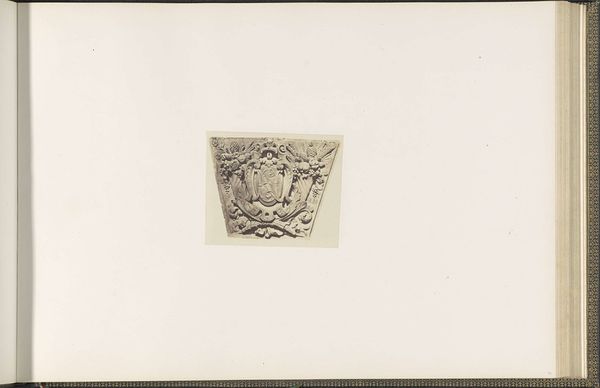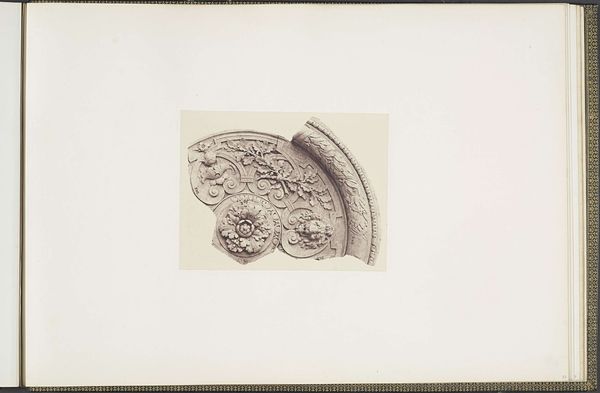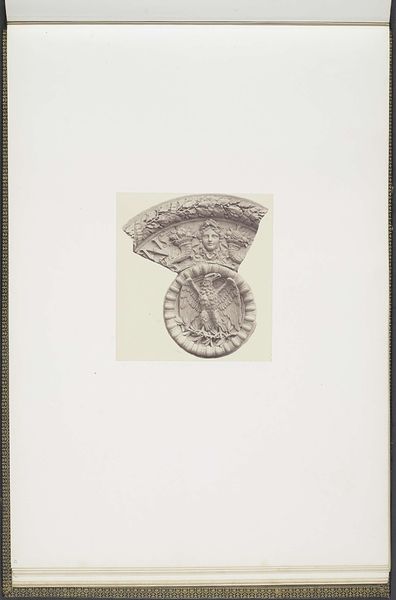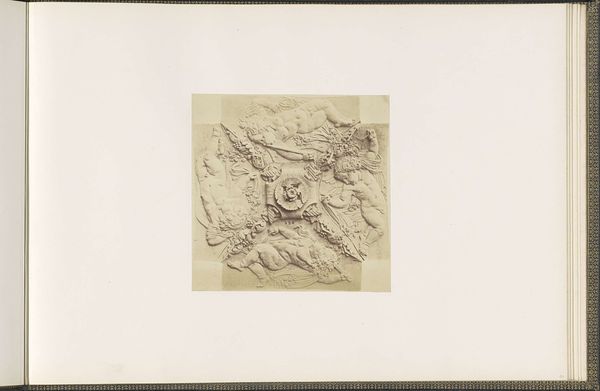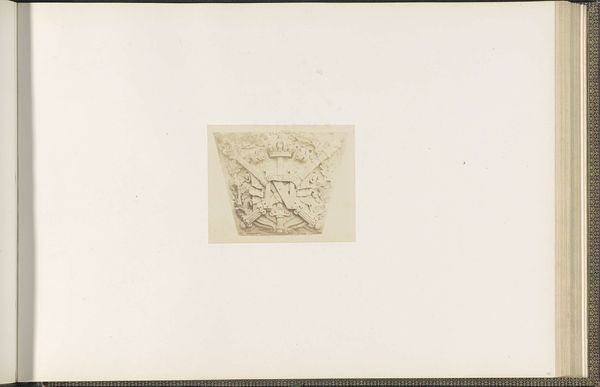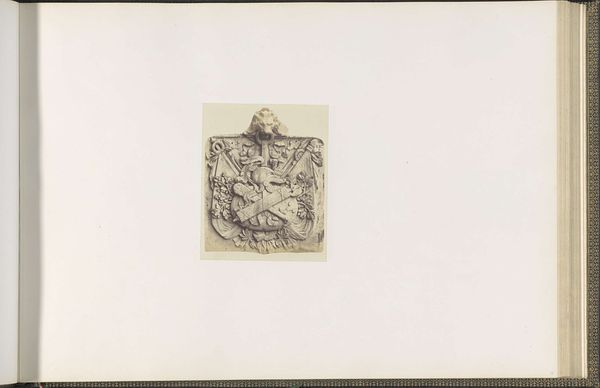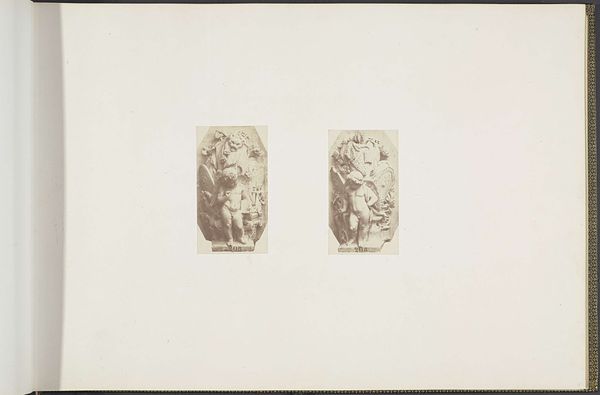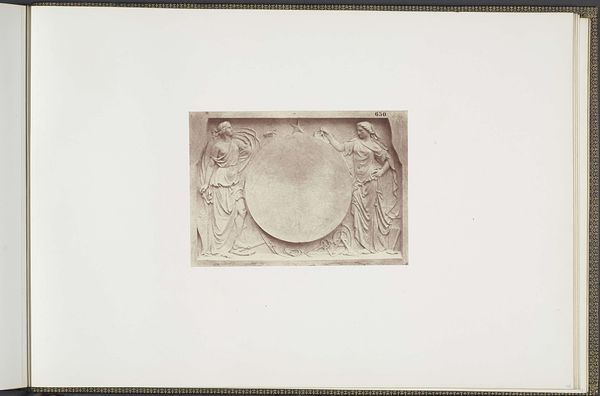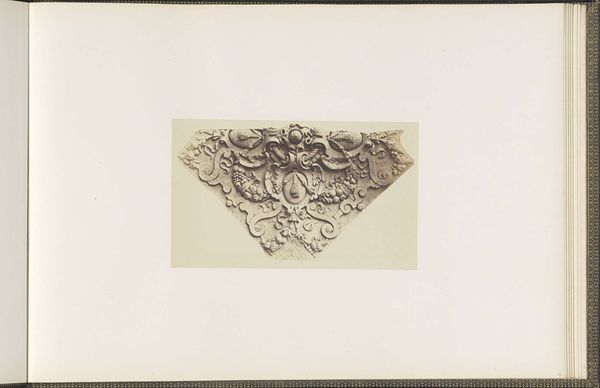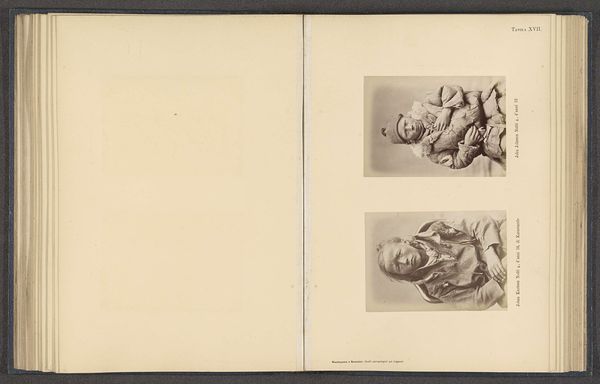
Gipsmodel voor een versiering van het Palais du Louvre door François Théophile Murgey c. 1855 - 1857
0:00
0:00
relief, photography, sculpture, plaster
#
neoclacissism
#
relief
#
classical-realism
#
form
#
photography
#
geometric
#
sculpture
#
plaster
Dimensions: height 378 mm, width 556 mm
Copyright: Rijks Museum: Open Domain
Curator: Let's turn our attention to this photograph of a plaster model. This image captures "Gipsmodel voor een versiering van het Palais du Louvre door François Théophile Murgey," created sometime between 1855 and 1857. The renowned photographer Edouard Baldus preserved this fragment for us. Editor: Intriguing. The first impression is of ordered grandeur. It looks like an archaeological fragment—a piece of antiquity pulled from the earth, laden with cultural weight. There's something very pleasing about the balance of textures and forms; the interplay of geometric precision and organic flow. Curator: Precisely. You’re right to key in on antiquity. Baldus captures a neoclassical plaster relief designed for the Louvre, intended as architectural adornment. This decorative plaster hints at France's obsession with classical aesthetics and power in the 19th century. Editor: Yes, and I notice the composition emphasizes a symbolic order, doesn’t it? A Griffin fiercely guarding what appears to be the urn over crossed swords, maybe? Everything points towards the crest in the center, creating layers and texture. It draws you in and gives the eye plenty to look at in the various emblems. Curator: Spot on. The griffin is the gatekeeper to some kind of story, and it really anchors one side of this composition. This symbolic representation evokes a continuity of French authority, borrowing heavily from historical motifs. Look how the decorative scrolls blend into geometric shapes to soften the imposing crests. It tells an origin story. Editor: A beautiful dance between light and shadow. The stark contrasts that are picked up in Baldus' photograph amplify the three-dimensionality of the work and hint to me about the nature of this decorative plaster’s texture. What seems imposing on first glance is now a far more complex creation of both texture and line. Curator: That's a beautiful insight. In short, this picture provides not just a photograph but a cultural portal that echoes through symbols and textures of 19th-century France. Editor: Indeed; I will leave with the enduring qualities of balance and dynamism locked into this one fragment—there is much to consider for the passing art-lover!
Comments
No comments
Be the first to comment and join the conversation on the ultimate creative platform.
